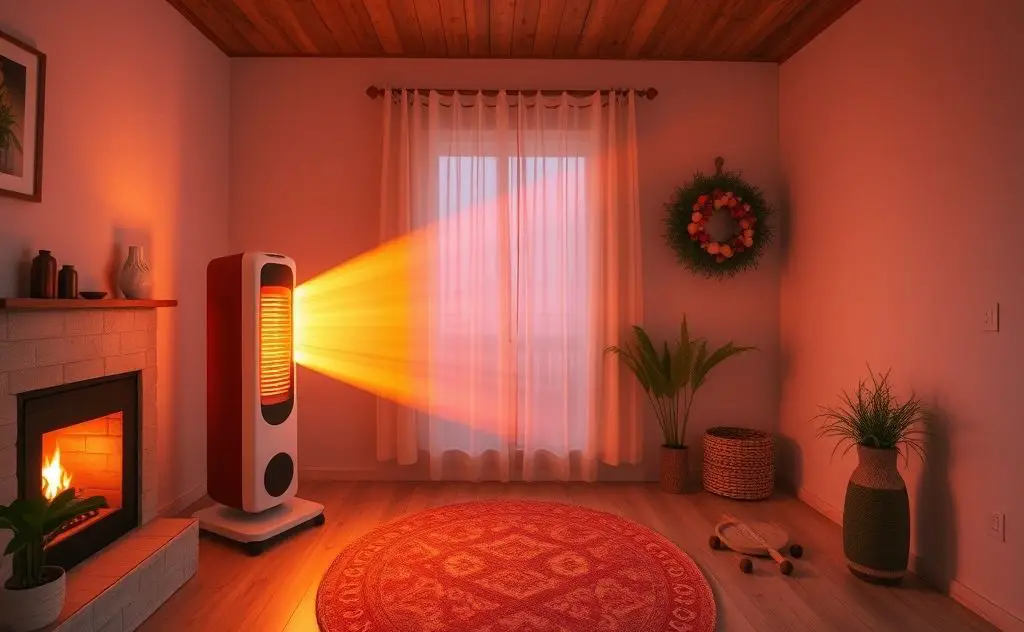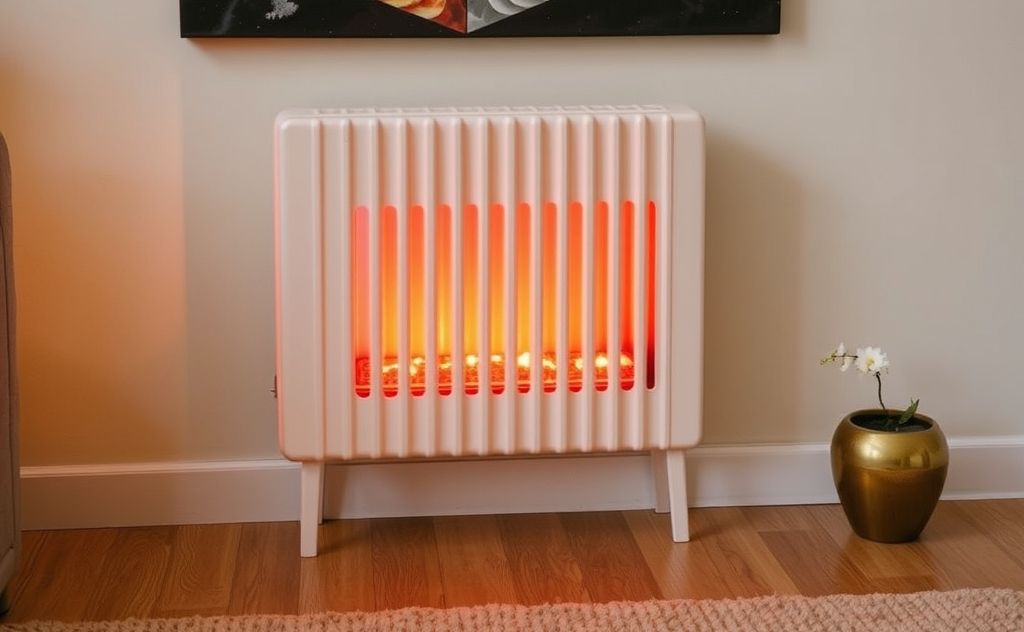A radiant heater works by emitting infrared radiation that directly warms objects and people in its path, rather than heating the air around them.
Radiant heaters provide direct, efficient warmth by emitting infrared waves that heat objects and people rather than the air. Unlike traditional convection heaters that warm air, radiant heaters transfer heat through electromagnetic radiation for instant, targeted comfort.

How Radiant Heating Works
Radiant heaters operate on the same principle as sunlight. They emit infrared waves that travel through space until absorbed by solid objects, which then release the energy as heat. This creates a direct warming effect without heating the surrounding air first.
The Science Behind Radiant Heat
Radiant heaters produce electromagnetic waves in the infrared spectrum (wavelengths between 780 nm and 1 mm). When these waves hit surfaces like floors, furniture, or skin, the energy converts to heat. The process is similar to how sunlight warms your skin on a cold day.
Key Components of Radiant Heaters
- Heating element: Typically made of quartz, metal, or ceramic that glows when heated
- Reflector: Directs infrared waves toward the desired area
- Protective grille: Prevents direct contact with hot surfaces

Types of Radiant Heaters
Modern radiant heaters come in several configurations for different applications:
1. Electric Radiant Heaters
These use electric resistance coils to generate heat. Common in indoor space heaters and underfloor heating systems. They’re quick to respond but can be expensive to operate.
2. Hydronic Radiant Systems
Uses heated water circulated through pipes in floors or walls. More energy efficient than electric but requires a boiler and professional installation. Ideal for whole-home heating.
3. Gas-Powered Radiant Heaters
Burns propane or natural gas to heat a metal emitter. Common in built-in gas heaters and outdoor patio heaters. Provides powerful heat output.
Benefits of Radiant Heating
| Advantage | Explanation |
|---|---|
| Instant Heat | Warms objects directly without waiting for air circulation |
| Energy Efficient | No heat loss through ducts or air movement |
| Zone Heating | Can heat specific areas without wasting energy on unused spaces |
| Silent Operation | No fans or moving parts create noise |
Radiant vs. Convection Heating
Unlike convection heaters that warm air (which then rises and creates drafts), radiant heaters:
- Don’t circulate dust or allergens
- Maintain more consistent temperatures
- Work better in spaces with high ceilings
- Are more efficient in drafty areas
According to U.S. Department of Energy, radiant heating can be 25-50% more efficient than forced-air systems in well-designed installations.
Applications of Radiant Heaters
Residential Uses
Popular for bathroom floors, kitchen areas, and living spaces. Underfloor systems provide comfortable warmth without visible equipment.
Commercial/Industrial Uses
Warehouses, workshops, and loading docks benefit from radiant heaters’ ability to maintain warmth in large, open spaces with high heat loss.
Outdoor Heating
Patio heaters use radiant technology to create comfortable outdoor spaces in cool weather. The ASHRAE Handbook notes radiant systems are particularly effective for outdoor comfort.
Installation Considerations
While portable radiant heaters require no installation, built-in systems need professional planning:
- Flooring materials affect heat transfer (tile works best)
- Insulation beneath radiant floors improves efficiency
- Zoning controls allow different temperature settings per room
Maintenance and Safety
Radiant heaters generally require minimal maintenance but benefit from:
- Regular cleaning of reflectors and heating elements
- Checking electrical connections on electric models
- Inspecting gas lines and burners on fuel-fired units
Always maintain proper clearances from flammable materials and consider models with tip-over protection and overheating safeguards.
